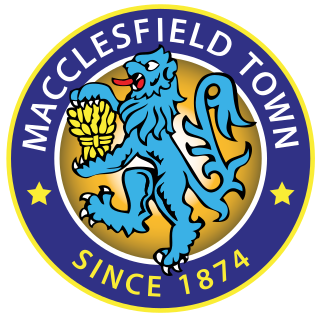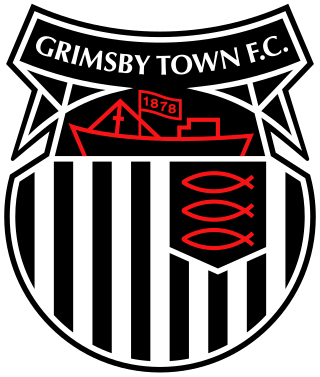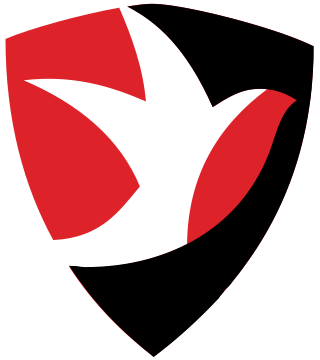Related Research Articles

Luton Town Football Club is a professional football club based in Luton, Bedfordshire, England, that competes in the Premier League, the top tier of English football. Founded in 1885, they are nicknamed The Hatters due to the historical association of the town with the hat making trade and have played home matches at Kenilworth Road since 1905. The club's history includes one major trophy win, several financial crises, as well as numerous promotions and relegations. Between 1982 and 1992, they were a member of the First Division; they won their first major honour, the Football League Cup, in 1988. Luton Town have a long-standing rivalry with nearby club Watford.

Swindon Town Football Club is a professional football club based in Swindon, Wiltshire, England. The team, known as the "Robins", currently compete in EFL League Two, the fourth tier of the English football league system; their home colours are red and white. Since 1896 the club has played home matches at the County Ground, which now has a capacity of 15,547. Hall of Fame inductee John Trollope played 770 league games for the club between 1960 and 1980, a professional record in English football.

Gillingham Football Club is a professional association football club based in the town of Gillingham, Kent, England. The only Kent-based club in the Football League, the "Gills" play their home matches at Priestfield Stadium. The team compete in League Two, the fourth tier of the English football league system, in the 2022–23 season.

Macclesfield Town Football Club was an English football club based in Macclesfield, Cheshire, that was wound-up after a High Court ruling on 16 September 2020.

Huddersfield Town Association Football Club is a professional football club based in Huddersfield, West Yorkshire, England, which competes in the EFL Championship. The team have played home games at the Kirklees Stadium since moving from Leeds Road in 1994. The club colours of blue and white stripes were adopted in 1913. Their nickname, "The Terriers", was taken in 1969. Huddersfield's current emblem is based on the town's coat of arms. The team have long-standing West Yorkshire derby rivalries with Bradford City and Leeds United.

Aldershot Town Football Club is a professional association football club based in Aldershot, Hampshire, England. The team competes in the National League, the fifth tier of the English football league system.

Yeovil Town Football Club is a professional association football club based in the town of Yeovil in Somerset, England. The team will compete in the National League South, the sixth tier of the English football league system. The club's home ground is Huish Park, built in 1990 on the site of an old army camp. That stadium is named after their former home, Huish, known for its pitch, which had an 8 feet (2.4 m) sideline to sideline slope. The club's nickname "the Glovers" is a reference to the history of glove-making in the town of Yeovil, which became a centre of the industry during the 18th and 19th centuries.

Northampton Town Football Club is a professional association football club based in the town of Northampton, England, that compete in EFL League One, the third tier of English football, following promotion from the 2022–23 EFL League Two.

Grimsby Town Football Club is a professional football club based in Cleethorpes, North East Lincolnshire, England, that competes in EFL League Two, the fourth tier of the English football league system.

Cheltenham Town Football Club is a professional association football club based in the town of Cheltenham, Gloucestershire, England. The club compete in League One, the third tier of the English football league system. Nicknamed the "Robins", they have played at Whaddon Road since 1932. The club contests rivalries with Gloucester City and Forest Green Rovers.

Mansfield Town Football Club is a professional football club based in the town of Mansfield, Nottinghamshire, England. The team competes in EFL League Two, the fourth tier of the English football league system. Nicknamed 'The Stags', they play in a blue and yellow kit. Since 1919, Mansfield have played at Field Mill, which is now an all-seater stadium with a capacity of 9,186. Their main rivals are Chesterfield and Notts County.

Shrewsbury Town Football Club is a professional association football club based in Shrewsbury, Shropshire, England. The team competes in League One, the third tier of English football. The club plays its home games at The Croud Meadow, having moved from the Gay Meadow in 2007. They have won the Shropshire Senior Cup a record 67 times and are the only club from the county to ever play in the Football League.

Crawley Town Football Club is a professional association football club based in the town of Crawley, West Sussex, England. The club was founded as Crawley Football Club in 1896, changed its name to Crawley Town Football Club in 1958. The team compete in EFL League Two, the fourth tier of the English football league system. The club has played home games at Broadfield Stadium since 1997 and are nicknamed the "Reds" or "Red Devils" due to the colour of their kit.

The English Football League Two, simply known as League Two in England and for sponsorship purposes as Sky Bet League Two, is the 3rd and lowest division of the English Football League (EFL) and fourth-highest division overall in the English football league system.

Fleetwood Town Football Club is an English professional association football club based in the town of Fleetwood, Lancashire. Established in 1997, the current Fleetwood Town F.C. is the fourth incarnation of the club, which was originally formed in 1908. The team compete in League One, the third tier of the English football league system.

The English Football League (EFL) is a league of professional football clubs from England and Wales. Founded in 1888 as the Football League, the league is the oldest such competition in the world. It was the top-level football league in England from its foundation until 1992, when the top 22 clubs split from it to form the Premier League.
The 2013–14 Football Conference season is the tenth season with the Conference consisting of three divisions and the thirty-fourth season overall. The Conference covers the top two levels of Non-League football in England. The Conference Premier is the fifth highest level of the overall pyramid, whilst the Conference North and Conference South exist at the sixth level. The top team and the winner of the playoff of the Premier division will be promoted to Football League Two, while the bottom four are relegated to the North or South divisions. The champions of the North and South divisions will be promoted to the Premier division, alongside the play-off winners from each division. The bottom three in each of the North and South divisions are relegated to the premier divisions of the Northern Premier League, Isthmian League or Southern League.
The 2014–15 Football Conference season was the eleventh season with the Football Conference consisting of three divisions and the thirty-fifth season overall. The Conference covers the top two levels of non-League football in England. The Conference Premier was the fifth highest level of the overall pyramid, while the Conference North and Conference South existed at the sixth level. The top team and the winner of the play-off of the Premier division are promoted to League Two, while the bottom four are relegated to the North or South divisions. The champions of the North and South divisions are promoted to the Premier division, alongside the play-off winners from each division. The bottom three in each of the North and South divisions are relegated to the premier divisions of the Northern Premier League, Isthmian League or Southern League.
The 2022–23 Northern Football League season was the 125th in the history of the Northern Football League, a football competition in England. The league operates two divisions in the English football league system, Division One at step 5, and Division Two at step 6.
References
- 1 2 Joyce, Michael (2004). Football League Players' Records 1888 to 1939. SoccerData. p. 178. ISBN 1-899468-67-6.
